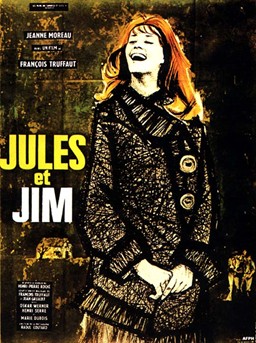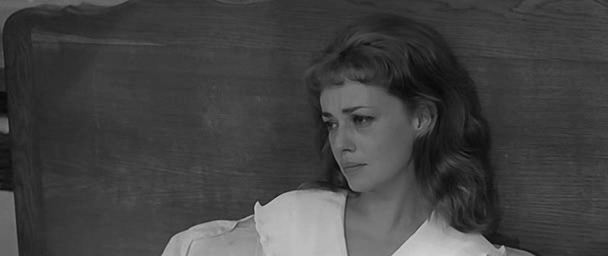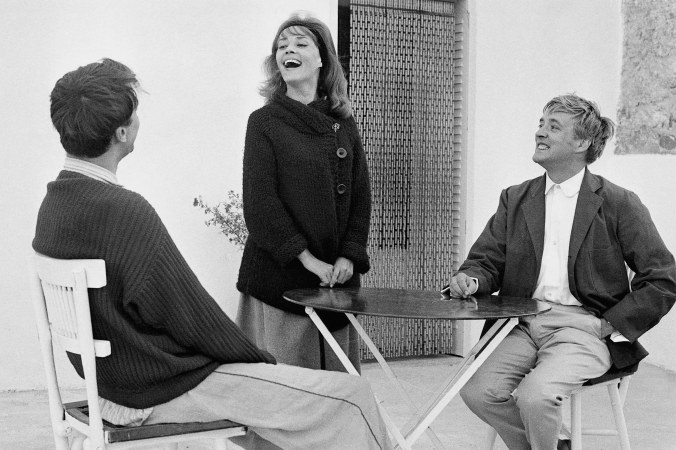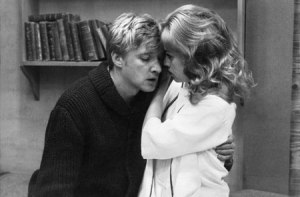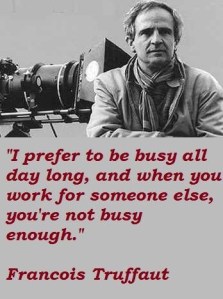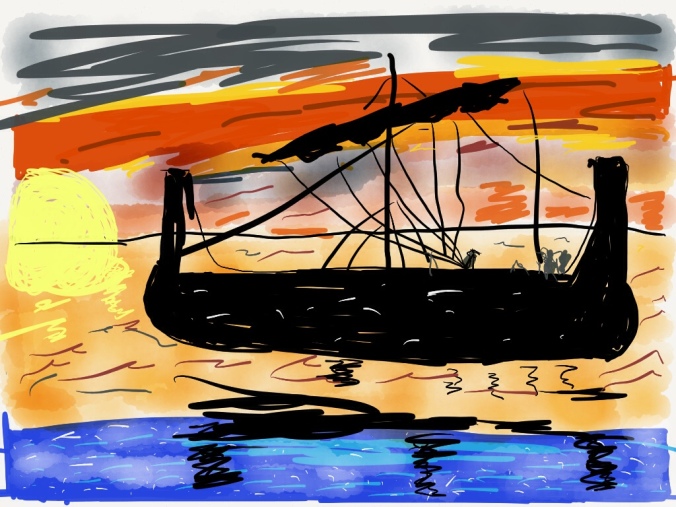“Siempre imaginé que el Paraíso sería algún tipo de biblioteca.”
(I always imagined that paradise would be some sort of library.)
Month: August 2015
Movie Review: Another Woman by Woody Allen–claiming a masterpiece
In Woody Allen’s film Stardust Memories, a Martian invader gives Woody Allen’s character, Sandy Bates, the following advice: “You want to do mankind a real service? Tell funnier jokes.” At the time, one didn’t have to talk to aliens to hear some people saying the same thing about Allen’s movies. They wanted funny, funnier, funniest. Raised on Take the Money and a Run, Bananas, and Sleeper, his fans wanted more of the same—antic, bumbling, wise-cracking Woody Allen.
And instead he created some dramatic masterpieces, which will long be remembered after Everything You Always Wanted to Know About Sex.. has faded into irrelevance.
Another Woman appeared in 1988. In the eleven years between Annie Hall (1977) and Another Woman, Allen had written and directed eleven films (and starred in eight of them) Two years earlier in 1986, he had had great success–both critically and with the public–with Hannah and Sisters.
However, there seemed to be a pattern with the public’s acceptance of these films at the time. Generally, fewer people went to his movies in which he did not act. (They needed their clown.) And the films in which he did not appear were usually his more serious work. Or at least, his “heavier” work. And thus, Another Woman failed to attract the audiences that most of his previous work had been garnering.
All of which is a shame, because Another Woman is a masterpiece.
Geena Rowlands plays Marion, chairman of the philosophy department, successful author, and a woman who believes she is better off not examining her own life and choices. (An odd choice in itself for a philosopher.) She is married to an eminent cardiologist and has a close relationship with his sixteen-year-old daughter from a previous marriage. He relationship with her brother, her father, and even with herself is not as close nor honest.
In order to write undisturbed, Marion rents an apartment. (New York cardiologists must do very well because Marion and his apartment is gorgeous, as is her “get-away” apartment where she writes. Apartment prices in NYC must have been quite cheaper in 1988 than they are today!)
The building has a quirk in the ventilation and unless she puts sofa cushions up against the ventilators, she can hear everything in the psychiatrist’s office next door. Which she soon begins to do purposefully. Removing the cushions, sends Marion down a rabbit-hole, a path which she is not sure she wants to pursue.
She becomes obsessed with one of the psychiatrist’s patients, a frail, pregnant, unhappy woman named Hope (Mia Farrow). From what she says, Hope is certainly unhappy, quite insecure and perhaps, even, suicidal. After a while, Hope’s overheard questioning of the choices she has made in life, leads Marion on a journey of her own self-discovery. And it is revelatory.
That Woody Allen reveres and has been influenced by the great European film-makers, especially of Ingmar Bergman is well known. (Ten years earlier in 1978 Allen made Interiors, a particular homage to the films of Bergman.) Another Woman is again inspired by Bergman, particularly his film Wild Strawberries. There are similarities in plot–the main characters must examine the coldness with which they have lived their lives–and technique–there are similar surreal dream sequences and scenes where the main characters are able to enter the scenes of their childhood.
And yet what makes Another Woman a masterpiece is not the bows to Bergman that Allen deftly offered, but the extraordinary performance he had engendered in Gena Rowlands. In several very long takes, the camera focuses on Rowlands’ face at different times as she listens to the patients next door. There is more emotional revelation in those moments than most actors can depict in an entire movie.
In fact, this quiet intensity seems startling compared to the Oscar-nominated performances she gave for her director husband, John Cassavetes. In films such as A Woman Under the Influence and Gloria, Rowlands exploded her emotions onto the screen. For Woody Allen, there is a intense quietness to her acting, an interiority that she allows us to see. And which draws us in to her pain and her self-examination.
The title Another Woman can be though of as referencing various things: Marion is the “other woman” for whom her husband left his wife; there is “another woman” with whom her husband is now involved; Hope is “another woman” whose analysis seems to be applicable to Marion; she has spurned passion in the past for comfort and security, and now “another woman” is enjoying the spark of that zest for life; and Marion herself is, at the end of the film, “another woman” than what she had earlier believed.
The Martians in Stardust Memories might have wanted funnier jokes, but with Another Woman they couldn’t have wanted a better film.
Richard Avedon’s Family Affairs at the National Museum of American Jewish History

Subway poster advertising the Avedon exhibit.
Jerry Brown, Bella Abzug, Barbara Jordan and George H. W. Bush
photograph 2015 by jpbohannon
In 1972, Francis Ford Coppola released The Godfather, the film version of Mario Puzo’s blockbuster novel from three years earlier. Four years later he released The Godfather II. Both the novel and the films were more than just extraordinary successes, they became part of America’s cultural weltgiest. They were widely honored and celebrated and they spawned scores of imitations–some good, some not so good.
And for a while there, when one heard the word “the Family,” one reference came immediately to mind: organized crime.
So it was with not a little irony that Rolling Stone published sixty-nine Richard Avedon photos under the umbrella title “The Family.” The issue was published on October 21,1976–just before the 1976 election and little after the Bicentennial celebration that summer. The mood of the country was neither particularly joyous nor overly patriotic. It had been a rough eight years. And Avedon’s portraits were of the U.S’s elite–the most powerful men (and a few woman) in the United States. Several would later move into even more powerful and influential roles.
Avedon’s portraits are stark in their simplicity. The subjects stand before a white screen. There are no props (although Katherine Graham does hold her eye-glasses in her hands.) Most are straight-on, some slightly turned. And most stare straight into the camera.
They are revealing portraits.
So it was great fun strolling through these portraits on display at the National Museum of American Jewish History and thinking of what have become of some these powerful figures. (The exhibit ran until August 2.) More than a few of the subjects have had large effects on American life since these photos were taken in 1976. There is George H. W. Bush, head of the CIA; Donald Rumsfeld, Secretary of Defense for Gerald Ford; Ralph Nader, described simply as a “Consumer Advocate”; Ronald Reagan, at the time simply the “Former Governor of California”; W. Mark Felt, a former Associate Director of the FBI (and whom we know now was the infamous “Deep Throat” of Watergate fame); and Jerry Brown, in 1976 the youngest governor in California history. Thirty-five years later, Brown was again elected and became the oldest governor in California history.
Avedon who started out as I.D. photographer for the Merchant Marines, entered the world of fashion photography (he is the model for Fred Astaire’s character in Funny Face) and shot for Vogue, Harper’s Bazaar, and Life. While still immersed in fashion photography, he began taking portraits of those involved in political dissidence and
social issues, celebrities and workers, the demi-monde and the hard-scrabble. While his fashion photography may be timeless, it is these “social” portraits that are the most powerful and unforgettable.
Such was Avedon’s reputation, that after “The Family” shoots, George H. W. Bush–America’s chief spy-master at the time–wrote the following to Rolling Stone:
It was a pleasure having Mr. Avedon out here at CIA… . I don’t know if he was as scared to come out here as I was in posing for the great Avedon, but he sure has a neat way of putting his victims at ease and I enjoyed our short time together.
THE FAMILY
The following are the list of subjects of Rolling Stone’s photo-essay “The Family”. These photos were part of the National Museum of American Jewish History exhibit, Avedon: Family Affairs.
Bella Abzug Carl Albert James Angleton Walter Annenberg
J. Paul Austin Benjamin Bailar Roger Baldwin Daniel Boorstin
Jerry Brown Gen. George Brown Arthur Burns George H. W. Bush
Earl Butz Joseph Califano Jimmy Carter Emanuel Celler
César Chávez Shirley Chisholm Frank Church Clark Clifford
John DeButts Thomas Eagleton W. Mark Felt Frank Fitzsimmons
Gerald Ford Thomas Gleason Katherine Graham F. Edward Hérbert
Adm. James Holloway Hubert Humphrey Daniel Inouye Lady Bird Johnson
Gen. David Jones Barbara Jordan Edward “Ted” Kennedy
Rose Fitzgerald Kennedy Henry Kissinger Richard Kleindienst Melvin Laird
Mike Mansfield Eugene McCarthy George McGovern George Meany
Arnold Miller Herbert J. Miller, Jr. Daniel Patrick Moynihan Edmund Muskie
Ralph Nader Thomas “Tip” O’Neill William Paley A. Philip Randolph
Ronald Reagan Elliot Richardson Admiral Hyman Rickover Nelson Rockefeller
Peter Rodino Felix Rohatyn A.M.Rosenthal Pete Rozelle
Donald Rumsfeld Charles Shaffer William Simon Jules Stein
I. F. Stone Cyrus Vance George Wallace Gen. Fred C. Weyand
Edward Wilson Gen. Louis Wilson Leonard Woodcock Rose Mary Woods
James Skelly Wright Andrew Young
The Other Families
Besides the portraits from the Rolling Stone piece, the exhibit “Avedon: Family Affairs” also contained several large scale murals of other different “families.” His portrait of the Chicago Seven is notable because of the absence of Bobby Seale, who had been jailed the day before the group shot was to be taken. There is a large mural of Andy Warhol’s “Factory” denizens, notable here for containing two portraits of Joe Dallesandro–one nude, one clothed. And there is a wonderful portrait, the largest of all of them, of Allen Ginsberg’s family. The family–celebrating the publication of Ginsberg’s father’s collection of poems–is a wonderful group, disparate like all families, but very much connected. Some hold plates with cake, some hold coffee cups, one sits, the rest stand, some stare at the camera, some look away.
It is a honest family shot of an American icon.
Quote 47: “Poetry is above all…” Adrienne Rich
Movie Review: Jules et Jim by Francois Truffaut
I have always envied that: going to a theater and watching a classic on the big screen. It doesn’t happen much where I am from.
Until recently, that is. One of the city’s major theaters began showing the newly mastered version of Carol Reed’s 1939 thriller The Third Man, and another theater was screening Truffaut’s Jules et Jim. I saw The Third Man earlier in the summer (which, by the way, is the first film I ever recorded on VHS, a long time ago when the local PBS was airing classic films at midnight.)
This past weekend, I saw Jules et Jim for the first time.
Truffaut’s Jules et Jim is a primer for anyone wanting to understand the French Nouvelle Vague that blossomed in the 50s and 60s. The loose and fluid camera work, the montages, the freeze frames, the newsreels, the voice overs, the simple location sets (allowing for the breezy filming), these are the defining attributes of the New Wave, and they are used masterfully in this 1962 film.And, as much as technical innovations defined the moment, so did the narratives. The films focused on youth, on iconoclastic characters outside the mainstream, and on ambiguity. One is never sure what to think at the end–and that is intentional.
Jules et Jim is basically the story of a love triangle. The film opens with a frenetic piece showing the carefree life of two friends, the French Jim and the Austrian, Jim. Jules is overly shy. Jim is a comfortable and adept womanizer.
Their friendship is intense and true.One day, another friend Albert introduces them to Catherine, a woman with a captivating smile and quirky personality.
When the normally shy Jules sees Catherine, he famously says to his playboy friend “Pas celle-là, Jim” (“Not this one, Jim”), asking that Jim does not use his charm to sweep this one away.
For this is the woman for him. And Jim, who is equally as attracted to her, acquiesces. The three have rollicking adventures together in the countryside, around Paris, and at the beach and they thoroughly enjoy each other’s company.Soon after, Jules and Catherine marry, but then World War I breaks out. Jules and Jim find themselves in opposing armies and pray that they don’t kill each other.
But Truffaut focuses on more personal conflicts than the global cataclysm of World War I. After the war, Catherine is quite unhappy in her marriage and in her motherhood. She has several affairs, one of which is with Albert who originally introduced her to Jules and Jim and who now is recuperating in the village below. (There is a hint that her child is actually his and not Jules’)
When Jim comes to visit them, she seduces him (he is an easy seduction since he too is in love with her) and ultimately they plan to marry and have children. Jules is okay with this–he loves both Jim and Catherine– and the three live together in an odd but comfortable arrangement.
That the arrangement and the plans fail is the descending path of Truffaut’s narrative arc. How they fail–spectacularly–is the thrill of the movie (and which I won’t reveal here.) Nevertheless, I can say that Jeanne Moreau as Catherine is wonderful and is the anchor of the film. Oddly, a young Oscar Werner resembles a young William F. Buckley, though his shyness and awkwardness is painful to watch. And Henri Serre makes a charming partner–both for Jules and for Catherine.
* * * * *
In the first paragraph of this post, I mentioned Woody Allen’s films, Bergman’s films, Wilder’s films. It is largely because of Truffaut that we identify films in this way. Before he directed films, Truffaut was a writer–and then editor–for the famous Cahiers du cinema (“Notebooks on Cinema”), a seminal journal that helped bring film into the realm of serious study. In the journal, Truffaut often argued his point that a director is the true author of the film, as much as a Picasso or a Hemingway is the creator of his work.It is only fitting then that when discussing the classics of twentieth century cinema, the phrase “a Truffaut film” is a necessary component of the conversation.
Book Review: Talk by Linda Rosenkrantz
His latter assertion, he bases on the fact that this novel deals with two “twenty-something” women and one male talking about relationships, hopes, dreams, and reality. Before Rachel, Monica and Ross dished, Rosenkrantz’s characters were doing the same.
And before Snooki and the “Situation” shared more than we wanted to know about their adventures at the Jersey Shore, Rosenkrantz’s kids were already at it.
And how she did it was that she took a tape-recorder (they were very bulky in the mid-1960s) everywhere she went one summer, on the beach, in the shore-houses, at clubs.
The concept sounded wonderful. Rosenkrantz took her tape recorder and recorded her friends as they made dinners, basked on the beach, drove to clubs, and packed and unpacked.At the end of the summer, she had more than twenty-five characters speaking the truth–or at the very least speaking. And they speak a lot.
Thankfully, she winnowed the twenty-five down to three: Vincent, a gay male painter; Emily, a struggling actress with a drinking problem; and Marsha, who has a “serious” job in New York, and who is the anchor of the novel. All of it is supposed to take place against the background of New York’s edgy art scene, with Warhol the subject of more than one name drop. (At the time, Rosenkrantz was editor of Sotheby’s Auction magazine and was quite cognizant of all the goings on in the art world at the time.)
The three are all at the shore. They are all in therapy. And they share their therapeutic insights with us. And on top of it all, there is an odd love triangle.
Emily loves Marsha. They are the best of friends and Marsha tries to nurture Emily through her psychiatric problems and her drinking. Vinnie understands Emily more than he understands Marsha, but Marsha is madly in love with him despite knowing he is gay. (And there are hints that Vinnie might also be in love with Marsha, but… .)
Take these three people, have their conversations recorded, and then transcribe them in a novel may have worked 50 years ago, but it does not work today. The psychoanalysis is juvenile, the relationships are sophomoric, and the conversations–for the most part–are deadening.
Koch was right when he said Talk was the precursor to reality television. He just didn’t tell us that it was the precursor of all that was inane, self-indulgent, and titallating about the genre. Talk might have been ground-breaking in 1968, but in the 21st century, it doesn’t even work as anthropology.
Imagine sitting on a towel on the beach next to these three people, discussing their analysis, their love lives and more. It would be enough for me to hope for a rip tide.
Quote 46: “…T is not too late to seek a newer world.” Tennyson
from “Ulysses”
Book Review: Milan Kundera–the new and the old: The Festival of Insignificance and The Unbearable Lightness of Being
A friend on mine was in semi-seclusion and had begun reading the novel aloud to her cat. (Although, out of compassion, she did not read him the passages where Karenin the dog is in his final stages of cancer and must be euthanized.) The cat stayed attentive through all of it.
Kundera himself would love this story.
Having no immediate access to Kurenda’s latest, I pulled down from the shelf my worn copy of The Unbearable Lightness of Being and began reading it myself. It was the sixth or seventh time I had read it.
What draws the reader into the novel are the characters’ personalities, both heroic and damaged; the politics, both sexual and global; and the self-knowledge with which each of the three characters, Tomas, Teresa, and Sabina, work at achieving and which causes readers to reflect inward themselves. At least, that’s what happened to me.
And of course, there is the quirky, sometimes humorous interruptions by the narrator and the self-aware, redoubling rhythms of the narration.
During the course of my reading, I also had to attend a funeral. And at the luncheon that followed, I sat next to a woman who has always reminded me of the actress, Juliette Binoche, which of course reminded me of Binoche’s role in the film version of The Unbearable Lightness of Being. That my friend was from East Germany underscored the connection with this Eastern European novel.
Here is the trailer from the 1988 film:
And so, I finally got the newest, The Festival of Insignificance, out of the public library, and began reading it the moment I finished the earlier work. It is a slim volume, a mere 115 pages in the American edition, and it features much of what is admirable in Kundera: Characters who “live examined lives” and are notable for their philosophic wonderings and reflective attitudes, a narrator who periodically pops into the story to discuss the workings of the novel itself, and a level of global political awareness that is not often present in American novels.
And there is Kundera’s wry humor.
The flap of the book jacket cites a passage from an earlier novel, Slowness, in which the wife of the main character tells her husband:
“You’ve often told me you meant to write a book one day that would have not a single serious word in it. … I warn you: watch out. Your enemies are lying in wait.”
The Festival of Insignificance purportedly is that book, and it begins with a discussion of the navel. Or at least what one character, Alain, feels is the eroticization of the navel in the 21st century. This thought comes about as Alain walks down a street in Paris and notices the many cropped tops and low-hung jeans — and thus the navels — of so many young women. And, it is this immediate preoccupation with the navel that is the cord that binds the various stories of the novel together.
Through his musings about the navel’s surge in fashionable exposure, the middle-aged Alain remembers the last time he saw his mother, who had wanted him aborted and abandoned him when he was two and whom he last saw when he was six. This is paired with another friend whose mother is dying, which is then linked to Joseph Stalin who gave birth to an era of madness and horror in twentieth-century Europe.
In fact, Stalin appears throughout the novel, finally making an appearance in modern day Paris, at a children’s show in the Luxembourg Gardens, riding in a tiny children’s carriage.
As with all of Kundera, there are serious musings on European and human history, on disease and finality, on love and on sex. These are thoughtful and thought-provoking discussions which nest comfortably in the interior lives of his main characters.
Kundera’s thesis is that in the vastness of the universe, human life AND human history is relatively insignificant–that human history is merely a “festival of insignificance.” And while there is much that seems “insignificant” in Kundera’s novel, the reality is quite different.
Human significance might not have cosmic ramifications in the universe, at large. It is, however, greatly personal, and often has repercussions through the larger community. So in this novel, the spilled Armagnac, the little lie about one’s health, the lines of people at a Chagall exhibit, all play a “significant” role in the lives of a limited circle of acquaintances. Our lives, our acquaintances, our histories are all rather parochial, to be sure, but they are ours, and they are all that we have.
The Festival of Insignificance is at first look a slight and whimsical book. But it is much more than that. It is enjoyable and funny and thoughtful and wise.
And despite the cited desire of the writer in Kundera’s Slowness, there are more than a few serious words in it.









